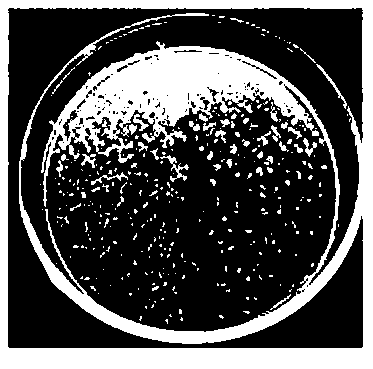Low-phosphor stress response regulatory factor ZmPHR1, gene for coding the protein and application
A technology of response regulator and gene, applied in the field of genetic engineering, can solve the problem of low phosphorus utilization rate of crops
- Summary
- Abstract
- Description
- Claims
- Application Information
AI Technical Summary
Problems solved by technology
Method used
Image
Examples
Embodiment 1
[0046] Implementation 1 Discovery and cloning of ZmPHR1 protein and its coding gene
[0047] According to the amino acid sequence of AtPHR1 (At4g28610) of Arabidopsis, the TIGR (The Institute of Genomic Research Database-TDB) corn database (http: / / maize.jcvi.org) was searched, and the length of the predicted amino acid sequence and domain, and obtained the merged sequence TC346249 that may encode the PHR1 gene, a total of 13 maize ESTs.
[0048] Using TC346249 as a template, the PCR primer sequences were designed as follows:
[0049] Forward primer: 5′-AAGCAAGGTAATGAAATG -3′;
[0050] Reverse primer: 5'-TGAATAGTGCAACCGATA-3'.
[0051] The total RNA of maize inbred line 478 was extracted with Trizol reagent from Invitrogen Company. After DNaseI (RNase-free) treatment, 4 μg was reverse-transcribed with M-MLV reverse transcriptase from Promega Company to synthesize the first strand of cDNA. used as a template for PCR amplification,
[0052] PCR reaction system: 39.5 μL of u...
Embodiment 2
[0056] Implementation 2 Construction of plant expression vectors
[0057] 1. Construction of pJIT163-ZmPHR1::GFP expression vector
[0058] Specific steps are as follows:
[0059] (1) Introduce SalI and BclI sites at both ends of the gene of the recombinant plasmid pMD18-ZmPHR1 (BclI is the homologous enzyme of BamH I)
[0060] PCR primers:
[0061] Forward primer: 5’- GC gtcgac ATGAGGAAGTTTAATC-3’
[0062] Reverse primer: 5’- GCG tgatca ACTATCTTGCAGTTT-3’
[0063] PCR reaction system: 39.5 μL of ultrapure water, 5 μL of 10×PCR buffer, 2 μL of template, 1 μL of forward and reverse primers with a concentration of 10 μM, 0.5 μL of EX-Taq DNase (5u / μL), and 1 μL of dNTPs (10 mM).
[0064] PCR reaction conditions: 94°C for 4min; 94°C for 30sec, 60°C for 30sec, 72°C for 1min30sec, 35 cycles; 72°C for 10min; 4°C for heat preservation.
[0065] (2) The recombinant plasmid pMD18-ZmPHR1 was double-digested with restriction endonucleases SalI and BclI, and the gene fragment wi...
Embodiment 3
[0073] Implementation 3 Acquisition of transgenic strains
[0074] 1. Obtaining of recombinant Agrobacterium strains
[0075] The recombinant plasmid pCAMBIA1300-ZmPHR1::GFP was introduced into Agrobacterium strain GV3101 by freeze-thaw method to obtain recombinant Agrobacterium containing ZmPHR1 gene.
[0076] 2. Obtaining of transgenic plants
[0077] (1) The recombinant Agrobacterium strain was used to transform Arabidopsis thaliana ecotype Columbia by drop method. Get T0 generation seeds;
[0078] (2) Screen the 2nd generation with hygromycin (50mg / L);
[0079] (3) Germinate positive T2 generation plants on MS plates containing antibiotics (50mg / L hygromycin), and observe the resistance reaction after 2-3 weeks. The lines without positive and negative segregation are ZmPHR1 homozygous plants Department, that is, the T3 generation (see image 3 ).
[0080] 3. Identification of transgenic homozygous lines
[0081] The T3 generation plants were detected by PCR ...
PUM
 Login to View More
Login to View More Abstract
Description
Claims
Application Information
 Login to View More
Login to View More - R&D
- Intellectual Property
- Life Sciences
- Materials
- Tech Scout
- Unparalleled Data Quality
- Higher Quality Content
- 60% Fewer Hallucinations
Browse by: Latest US Patents, China's latest patents, Technical Efficacy Thesaurus, Application Domain, Technology Topic, Popular Technical Reports.
© 2025 PatSnap. All rights reserved.Legal|Privacy policy|Modern Slavery Act Transparency Statement|Sitemap|About US| Contact US: help@patsnap.com



